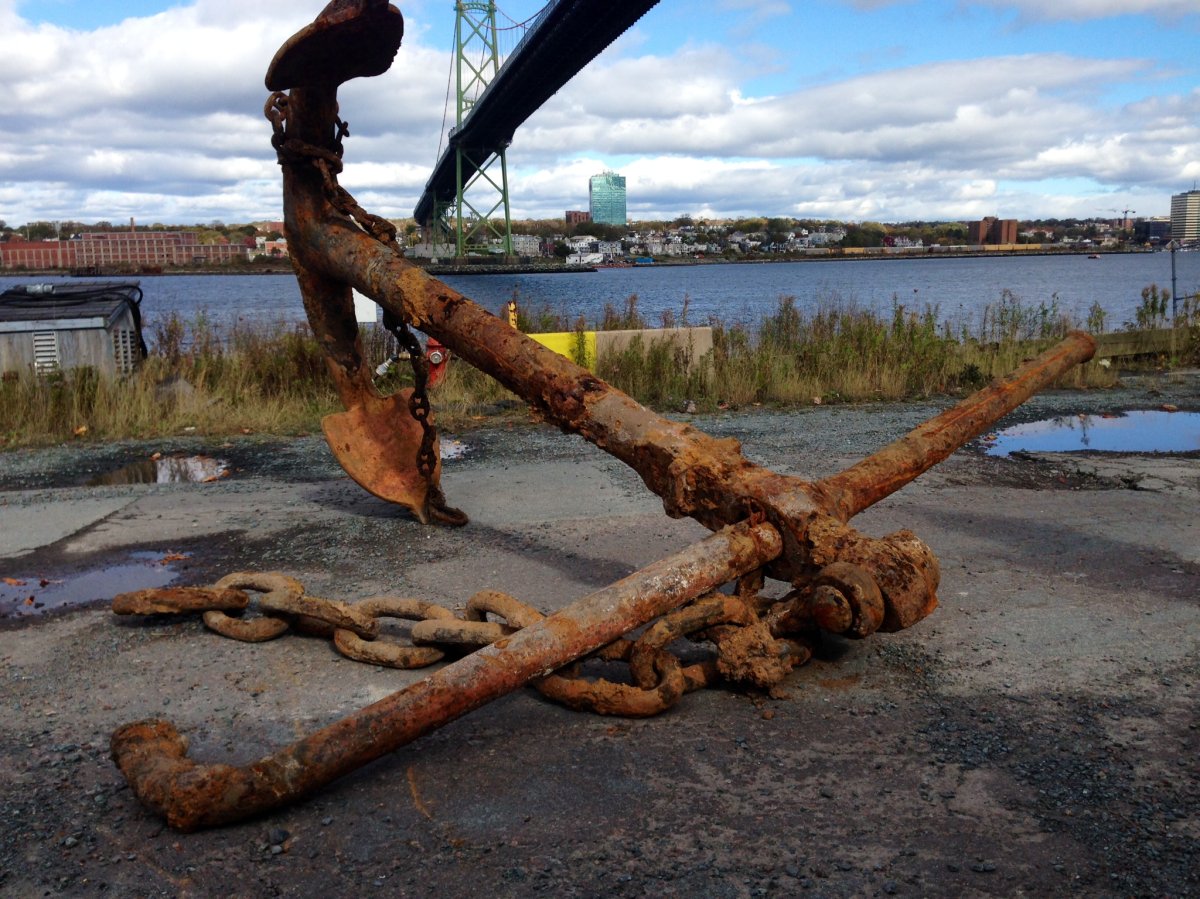HALIFAX – At 13 feet from crown to head, a massive ancient anchor is now the newest, and one of the oldest artifacts of the Canadian Navy.

The anchor weighs more than two thousand pounds, with each chain link weighing about seventy five pounds.
Experts are still trying to accurately date the artifact, but markings on the anchor suggest it was likely constructed in the late 1800’s.
The anchor belonged to HMCS Niobe – the first warship the Canadian navy took possession of in 1910.
“The navy at the time of the First World War was very small at the beginning, and by the end of it, it was well more than 9,000 people involved, and all of them would have done a rotation through the Niobe at one time or another,” says Rick Sanderson, Director of the Naval Museum of Halifax.
The anchor was unearthed last week at a nearby construction site. Officials say it’s not unusual to find naval artifacts – but typically they’re in very poor condition.
This one, however, is in such good shape experts says it could still be used for a few hundred years, something Sanderson says is quite unusual.
“Its almost impossible, this is very acidic soil around here. Where we are right now is landfill. When I saw the anchor, the crown, which is the rounded part, was facing towards the west and the flutes were dug into the ground and it was about 3 feet in the ground and slightly off to the side”
Finding this anchor is not only important for the Canadian Navy, but has a significant impact in Halifax.
It’s believed this anchor was put on HMCS Niobe following the Halifax Explosion.
“Niobe was tied up right here, parallel to the coast, held in with anchor chains into a small mooring, and she took the full blast from the explosion. Sailors from the Niobe died in the Halifax Explosion trying to go to the rescue of the victims and the burning ship Mount Blanc” says Commander John Newton, Maritime Forces Atlantic.




Comments